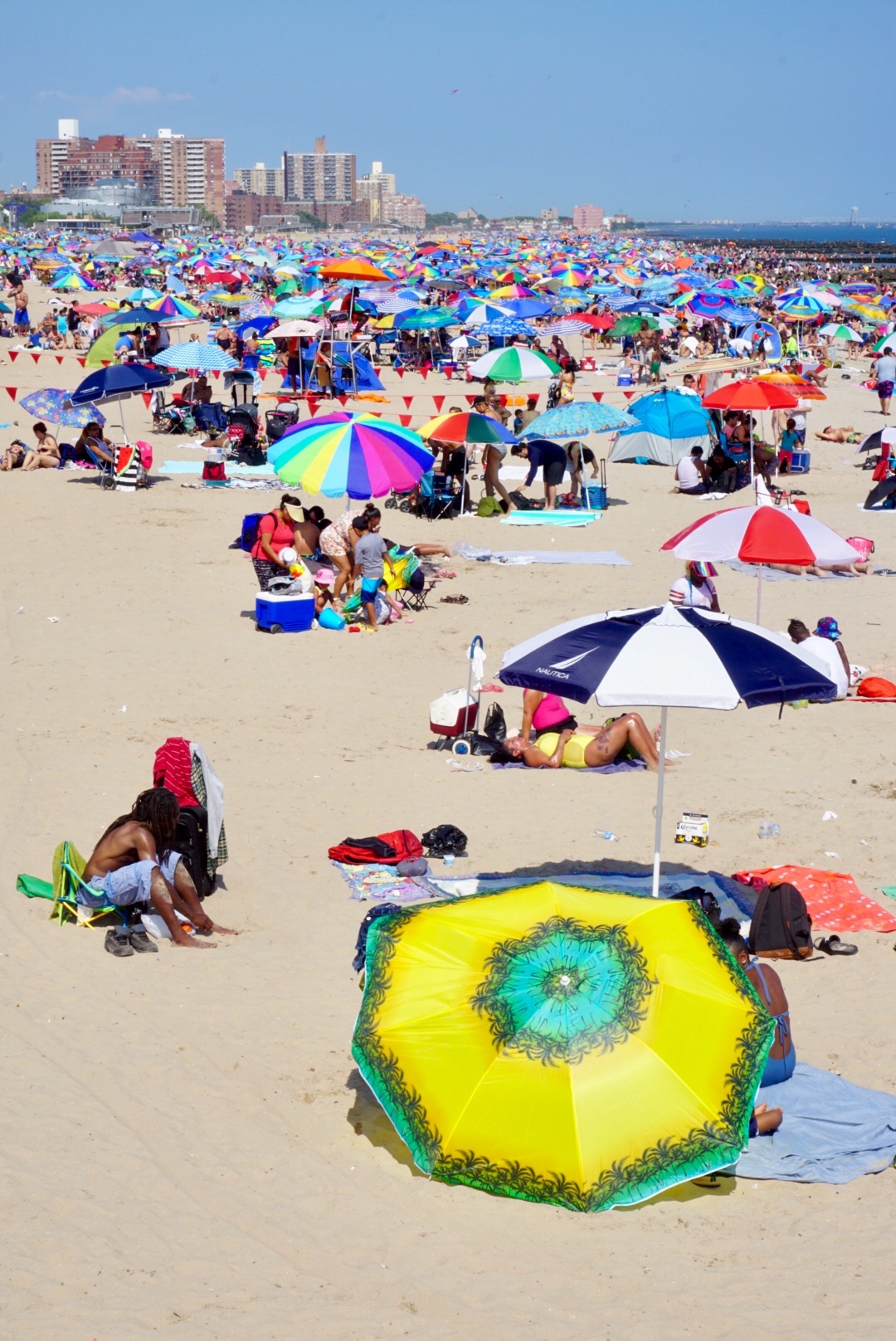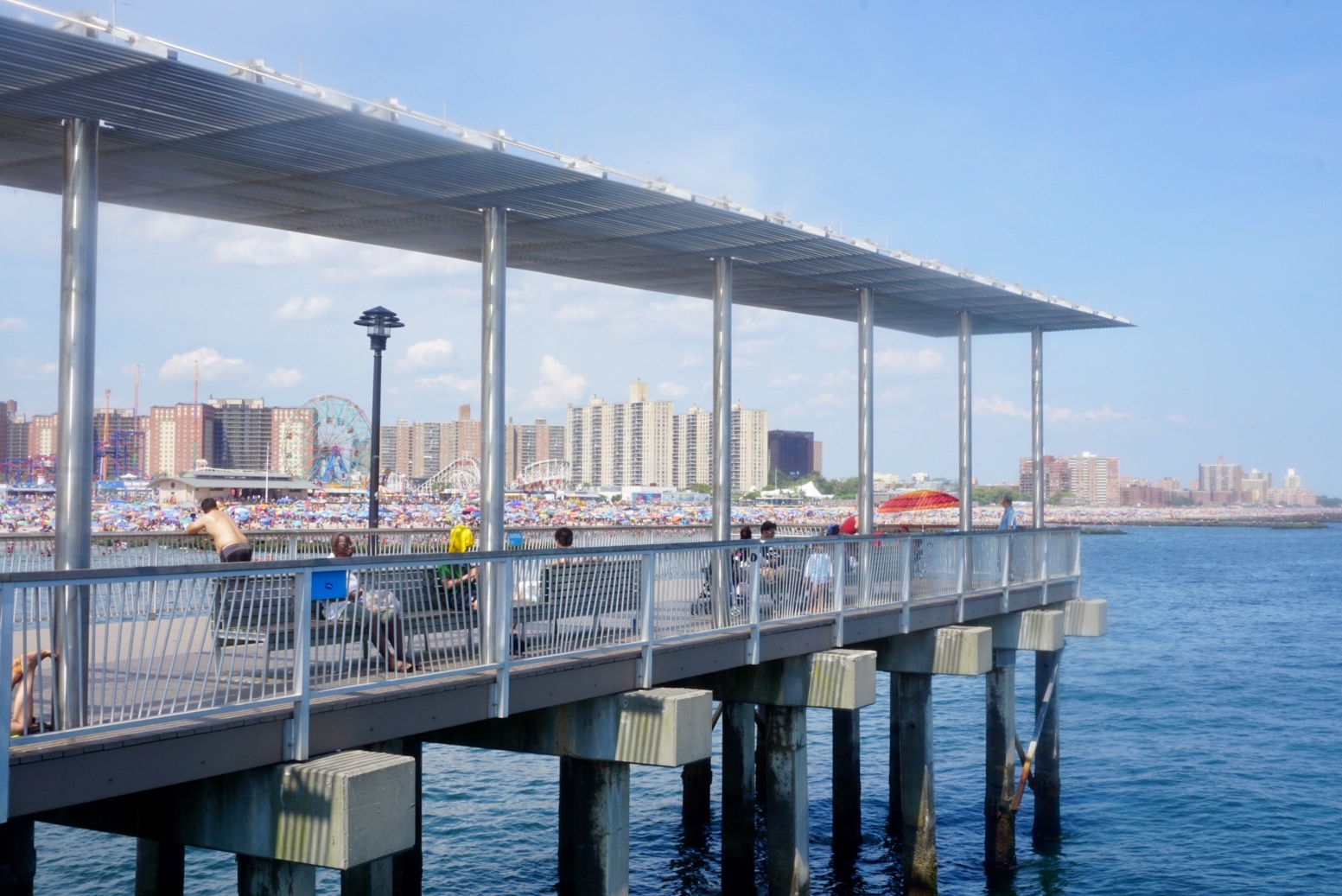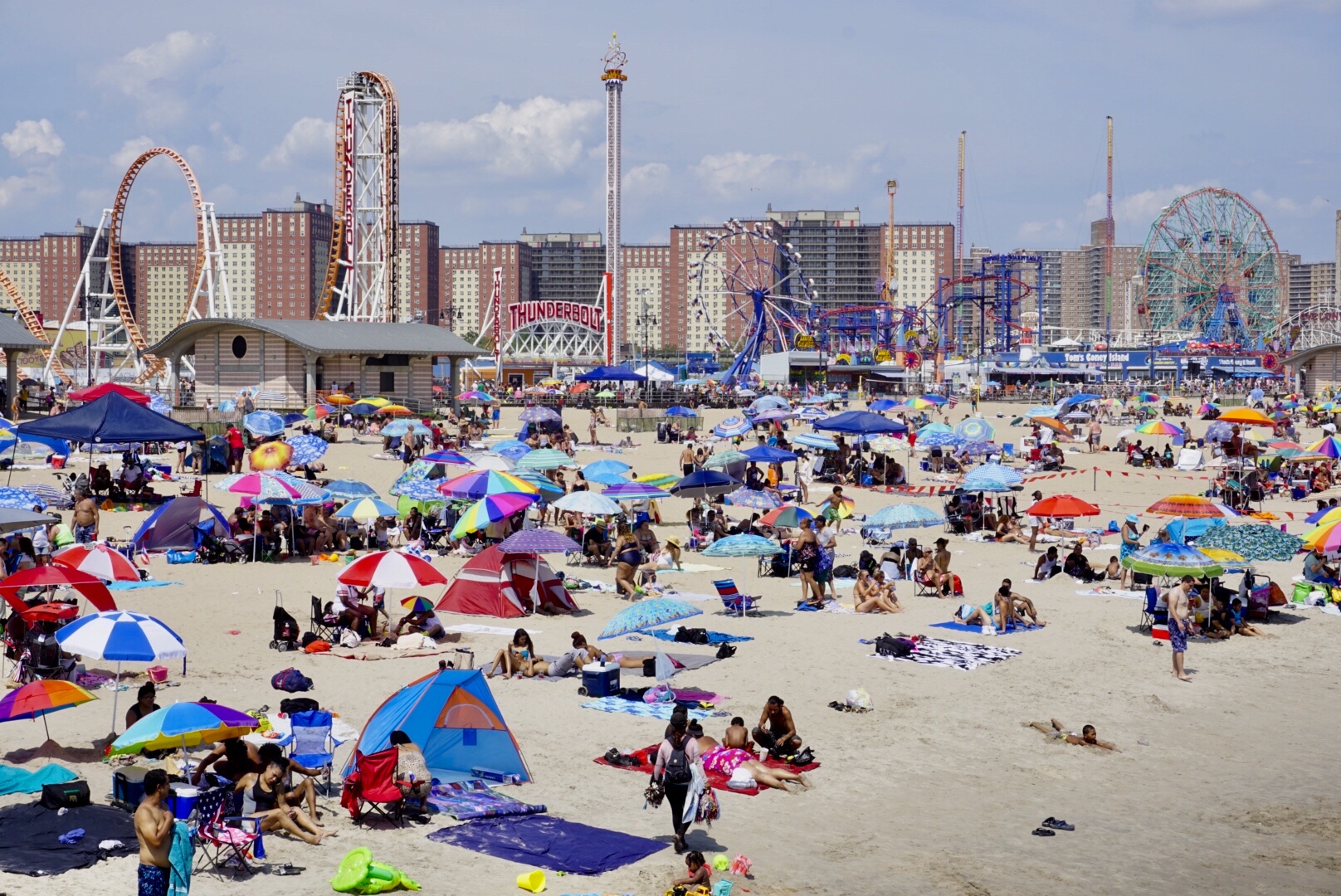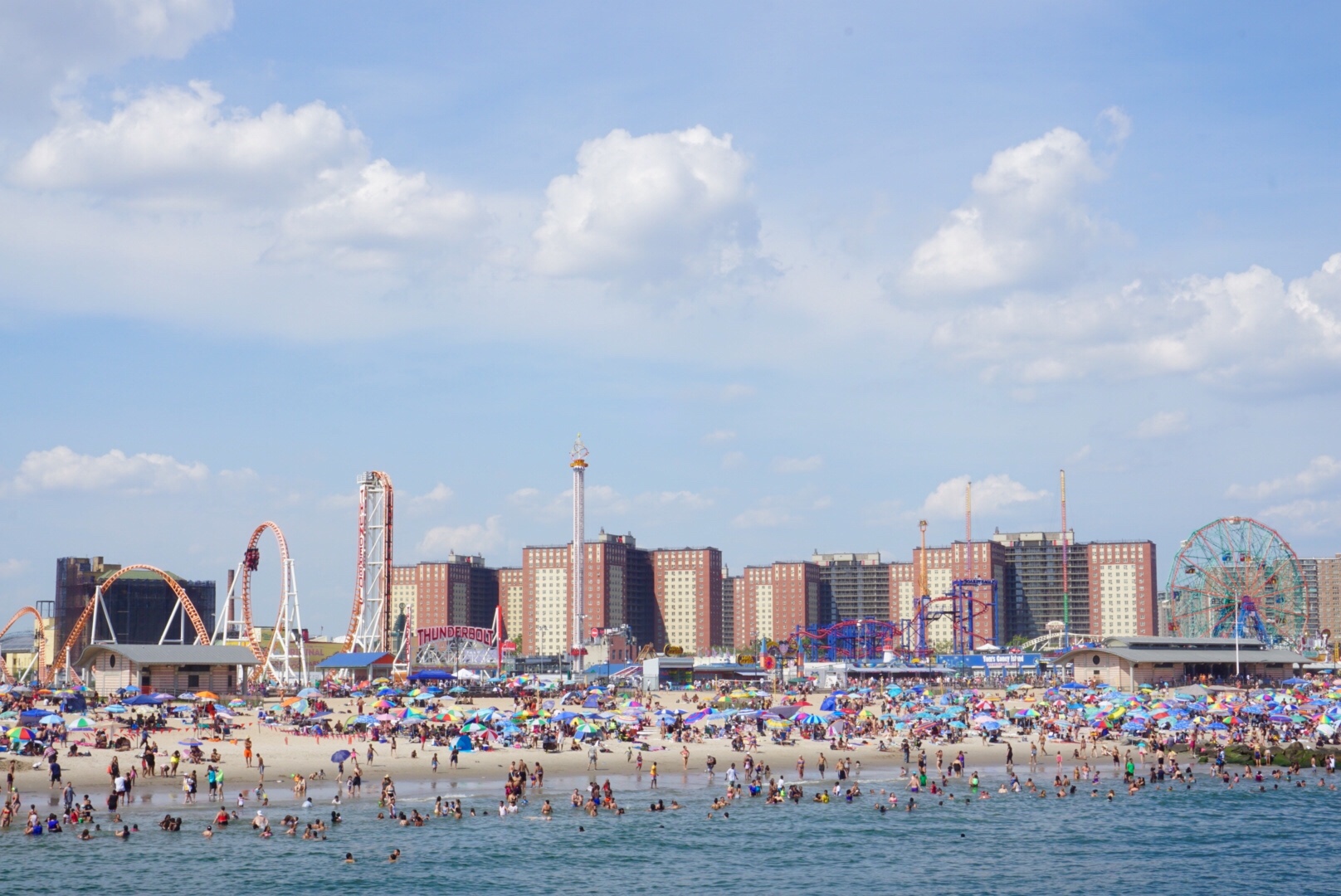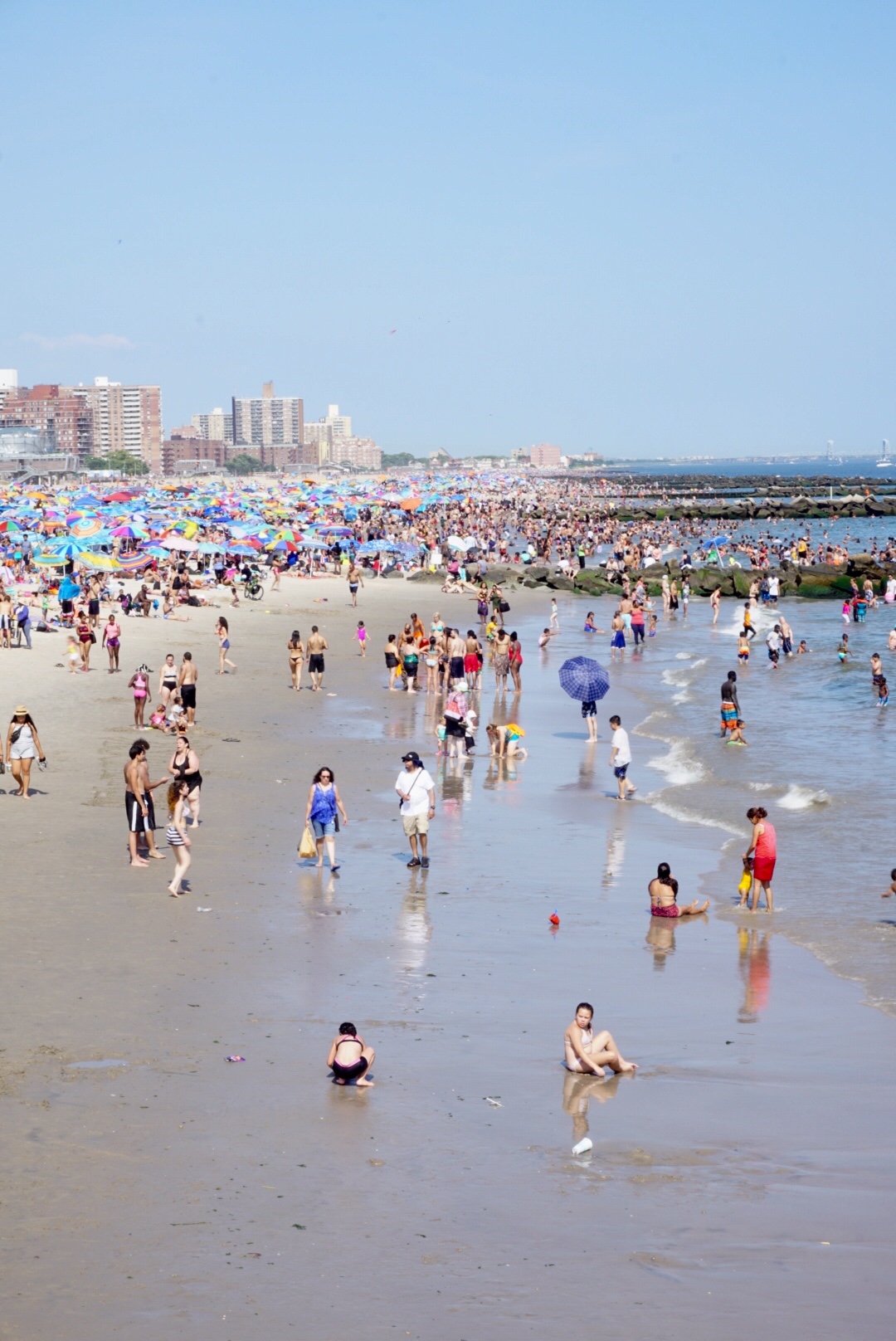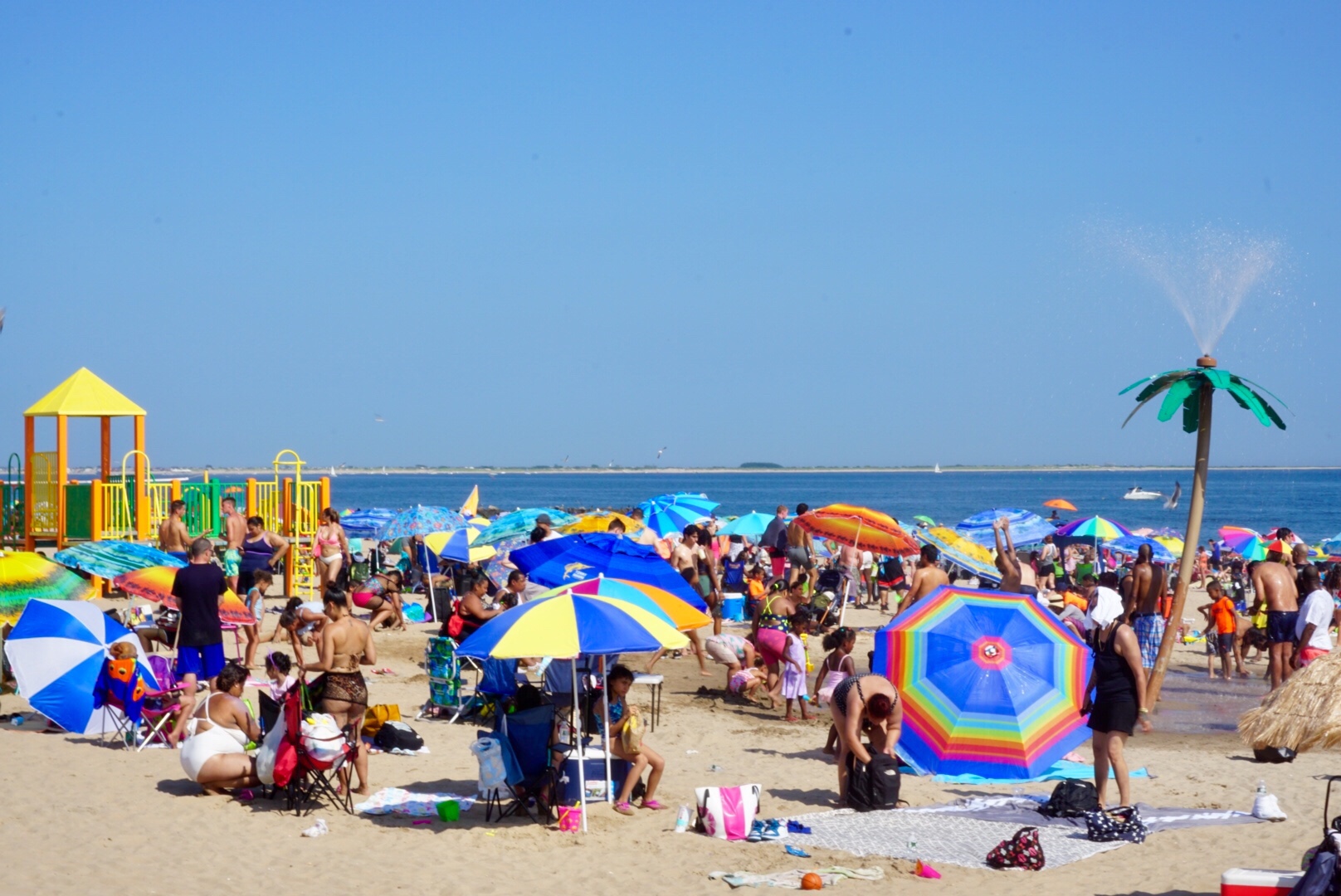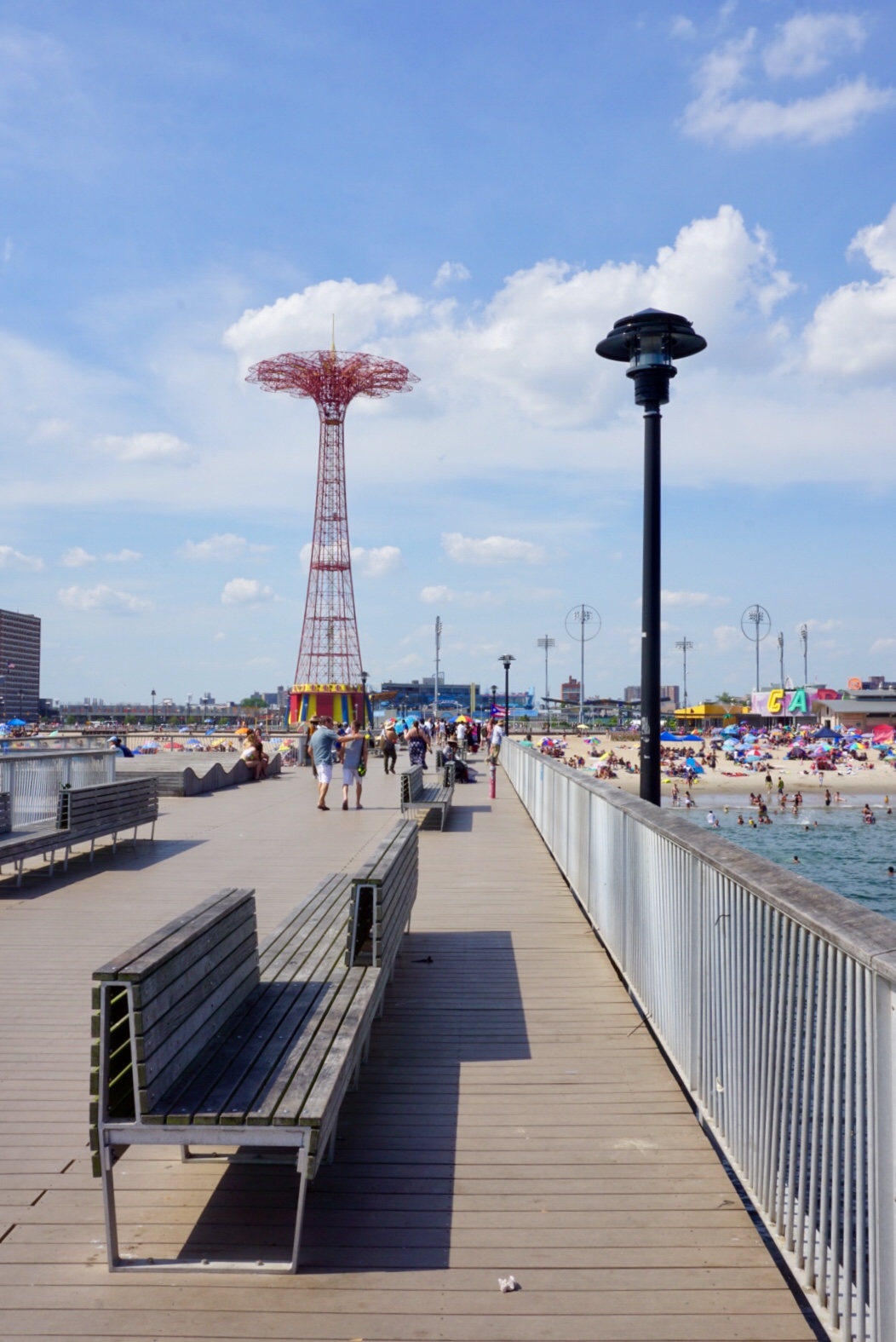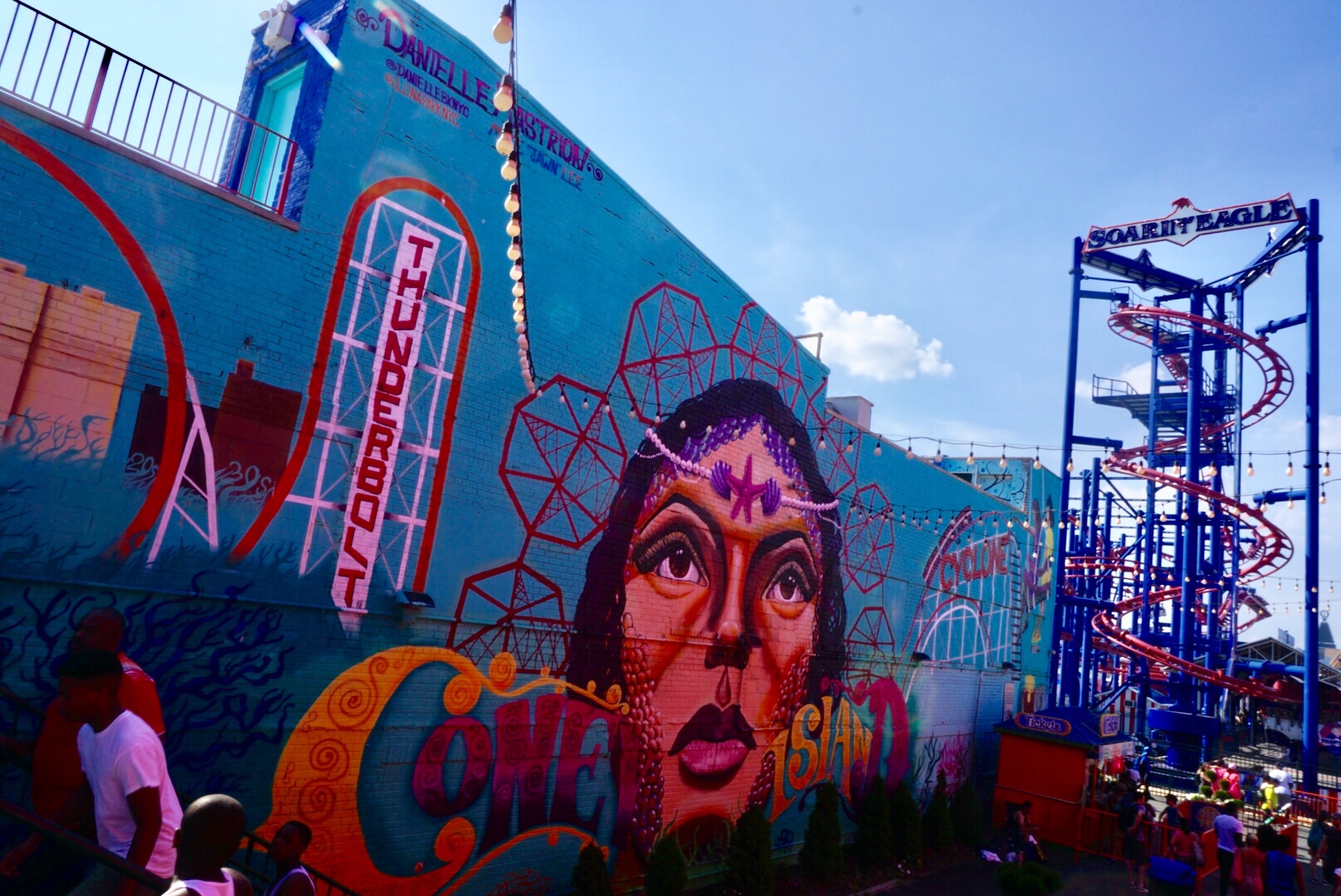On a hot and humid day in Manhattan, I headed for the beach in Coney Island, the south-western corner of Brooklyn.
The journey was about 90 minutes on the subway. When I got there, it turned out to be as hot as Manhattan. There was no sea breeze to cool us down. I even walked to the end of the pier, from which there was a good view of the seafront, but no respite from the heat.
Coney Island has two amusement parks: Luna Park and Deno’s Wonder Wheel Amusement Park. The rides have names like Wonder Wheel, Cyclone, and Thunderbolt. There’s also an aquarium, which every self-respecting seaside town has. However, like British seaside towns, I felt Coney Island had seen better days. That may change. The residential developments, whatever the aesthetic intentions, have added much needed housing to an over-populated region. And recent investments may yet revive the Island.
Whilst walking around, I saw a giant sign about the annual Nathan’s Hot Dog Eating Contest. I wondered if it was the same contest that was once featured on a Freakonomics podcast I had listened to. I looked at the Wall of Fame — the list of previous winners — and saw Takeru Kobayashi’s name several times. It was the same contest!
I remembered the contest because the podcast had told the story of how an outsider — a non-American! — had changed the history of a very American affair.
The 2019 event took place just a few weeks before I got to New York. Competitors aim to eat as many hot dogs as possible in 12 minutes (later 10 minutes after Kobayashi left his mark on the contest). Until 2000, the record languished at the 25 mark for many years: the winner ate a hot dog roughly every 30 seconds.
Over the years, most participants simply crammed as many hot dogs as possible into their mouths. They ate them the way people normally ate hot dogs — only more quickly. That is why the record had not budged much. There’s only so much you can ingest in 12 minutes using this technique.
In Japan, when Kobayashi heard about the contest, he became intrigued. Kobayashi started looking at the contest analytically. He wondered what if he ate a hot dog in another way. After all, the purpose of the contest was not to eat hot dogs in the way people do during a meal but to swallow as many hot dogs as possible.
After redefining the challenge, Kobayashi started experimenting with different ways of eating a hot dog: eating the frankfurter and bun separately, breaking them in two, dipping them in water (so he wouldn’t waste time drinking water), and many other variations. Eventually, he devised what he would later call the Solomon Method: he split the frankfurter in half, dipped the bun in water, and then stuffed both into his mouth.
Not content with finding the optimal method of devouring hot dogs, Kobayashi also investigated the physiology of eating an inordinate amount of hot dogs. He found ways of expanding his stomach before competitions; he exercised to reduce his body fat to ensure the fat wouldn’t impede the expansion of his stomach; and he even found a way to wiggle his body to force food down his oesophagus and settle more compactly in his stomach.
When I first heard about Kobayashi, I imagined he had the dimensions of a sumo wrestler. He didn’t. He turned out to be 173cm (5 ft 8 in) and weighed a mere 60 kg (9 st 6 lbs). It turns out that being slim helps: all the belly fat gets in the way of an expanding stomach, which is essential to ingest a few more hot dogs.
Like a researcher, Kobayashi recorded everything in spreadsheets and noted what worked and what didn’t. He refined his techniques when new evidence emerged. No one had brought so much thought, creativity, and scientific rigour to the mundane act of eating a hot dog. He eventually devised a pre-competition three-month training programme that a professional athlete would have been proud of.
This dedication resulted in Kobayashi shattering the world record when he first entered the contest, in 2001. He ate 50 hot dogs, doubling the previous record! He went on to win a further five times before being beaten by Joey Chestnut in 2007. Of course, by then, everyone was copying some of his techniques. He had revolutionised competitive eating by showing people what was possible. They weren’t having a meal any more. They were participating in a sport.
Since 2009, Kobayashi has not competed in the Coney Island contest because he refused to sign an exclusive contract with Major League Eating, the sanctioning body of the contest. He claimed the contract limited his annual earnings to $40,000, which was a paltry amount given that he could win $20,000 in a single competition. He was also, by then, a celebrity on the competitive eating circuit and had expanded his repertoire to eating buffalo wings, chicken satay, lobster rolls, cows’ brains, hamburgers, tacos, pizzas, soba noodles, rice balls, and other culinary delights.
After he left the contest, it apparently experienced a loss of sponsorship and the rapid rise in viewers stopped. Without Kobayashi, the “godfather of competitive eating”, the competition was not the same.
You can listen to the Freakonomics podcast on Kobayashi here.
